I reviewed the first class cabin of China’s high speed train last year, which frankly is better than most if not all my previous experiences in Europe. Remember that the most premium cabin on China’s High Speed Railway (CHSR) is business class, inspired by Eurostar’s naming system, and I finally decided to “splash out” in my recent trip home.
I’m travelling from Beijing to Zhenjiang, which is just over 1,000 km or 600 miles, and the journey takes around 4 hours and 20 minutes. Tickets for each route have a fixed price, but a discount of 2% – 30% might apply to some trains, depending on the time of the year and the predicted popularity of that particular carrier. I don’t think when you purchase the ticket matters.
To give you an idea, here are the full prices for my route:
- Second class: 557 RMB (£61)
- First class: 897 RMB (£98)
- Business class: 1946 RMB (£214)
As a rule of thumb, if a second class ticket costs X, then first class will cost roughly 1.5X and business class 3X ~ 4X. In my very limited experiences I haven’t been in the second class yet and I have been strongly advised against it by many people, main complaints focusing around crowdedness, crying babies, loud speakers and people on their phones.
I have been quite happy with first class in the past, and wondering if business class is worth the (heavy) extra. We’ll find out in this article!
Similar to air travel, your exclusive experience starts the moment you enter the train station. Except for the small local ones, many stations have a dedicated entrance for business-class passengers, with its own ticket inspector and security check.
This is the VIP entrance of Beijing South.
After breezing through the checks, the business class lounge (directory here) is just on my left. Such interior design is quite common in state-owned venues, for example Air China’s lounges, and is often referred to as 老干部风 (old cadre’s style).
The lounge experience is quite similar to what you get in the UK: some sofas, drinks and snacks are available but no food or alcohol. What’s unique is their VIP boarding service: when your train is ready, an usher will come and scan your ID / ticket, and then guide you through a dedicated door, bypassing the queues.
At the back of the business class carriage there’s some space for bag storage.
And here’s how the carriage looks like:
Spoiler alert: CHSR now has three different business class configurations, and what you see here is the old and most common one. The other two are being slowly rolled out in the latest Intelligent EMU fleet, and we’ll talk about them later.
At each row there are only three seats (as opposed to four in first class and five in second), one solo and one duo separated by the aisle.
The seat itself is a hard-shell pod that reclines forward, resembling some (dated) business class seat on an aircraft. You won’t find this kind of legroom on any plane though.
Bonus point for the international power socket, saving you the trouble of a convertor:
Tray table and the IFE, which appears to be… broken?
Control panel for the seat:
And this is it fully reclined into a bed:
You don’t stick your feet into a cub hole and there’s enough room for you to wiggle.
There’s a snack pack for all business class passengers.
If you are on a long-haul journey, you are entitled to one free meal. They are served at designated times, but you can request it from the attendants at your own convenience.
This is my set meal of beef:
Don’t expect a proper three-course meal or free-flowing alcohol like with an airline. What you get served here is identical to the set meals that any passenger can purchase, the cost of which ranging from 15 RMB to 88 RMB, just a fraction of the business class fare.
Although the food offering is underwhelming, the overall business class experience has been a great pleasure. And even better – if you are lucky enough to be on the right Intelligent EMU train, you’ll find yourself in either a reverse-herringbone seat or a business suite:
They resemble the more trendy airline business class configurations, offering better comfort and privacy. Beware that majority of the Intelligent EMU fleet still features the old eggshell seat but with a much smaller business cabin (5 seats only). Trains with the new seats can often be found on the fastest trains between Beijing and Shanghai, such as G2, G5 and G11.
China has a lot of pride in the high-speed trains and I think they have every reason to feel so. It is a fast, convenient and cost-efficient way to travel within China and you have to see it with your own eyes. The business class is great, but personally I think first class is more than enough for most needs and much cheaper.


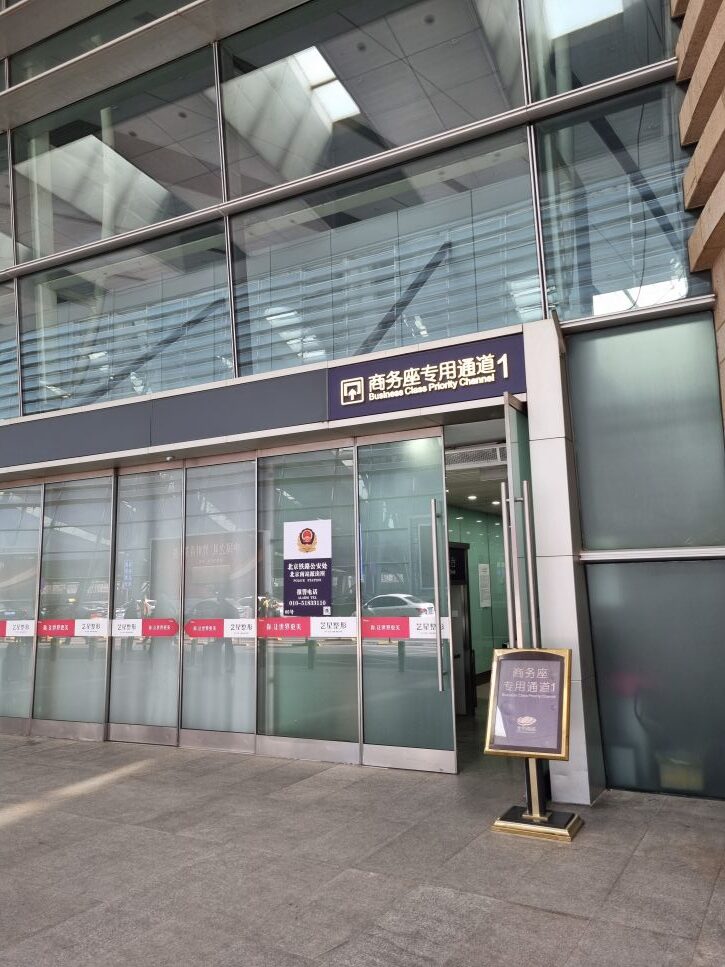
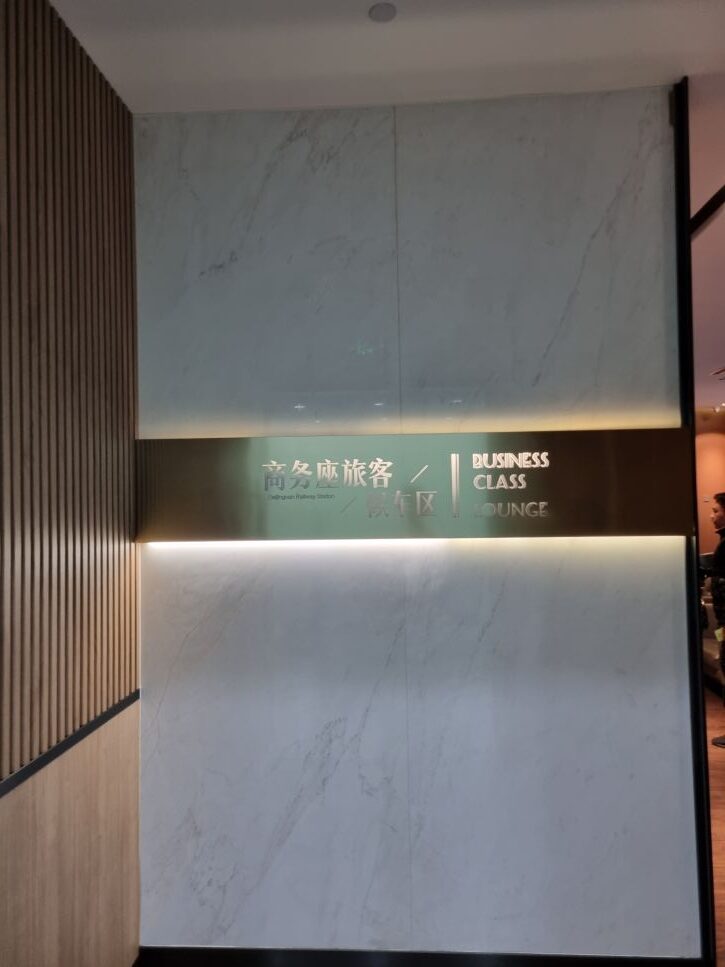
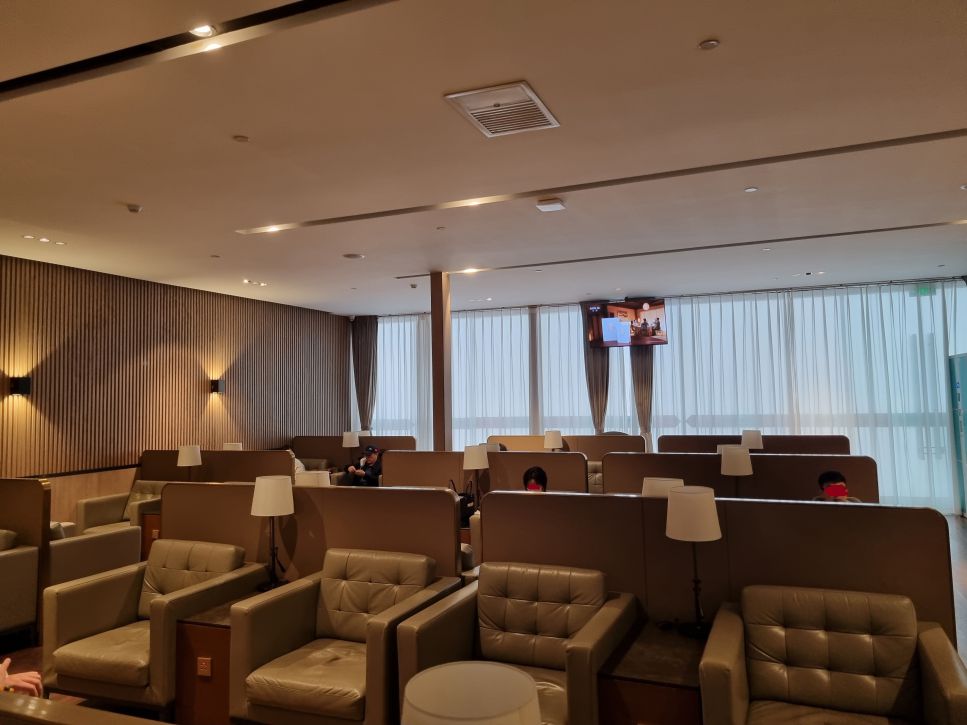
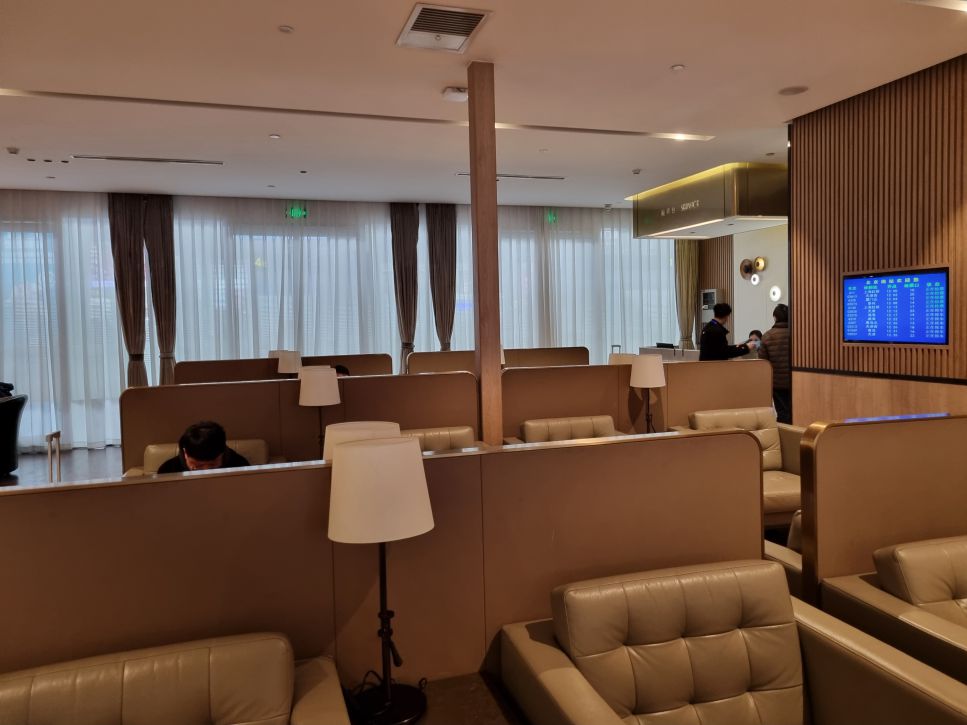
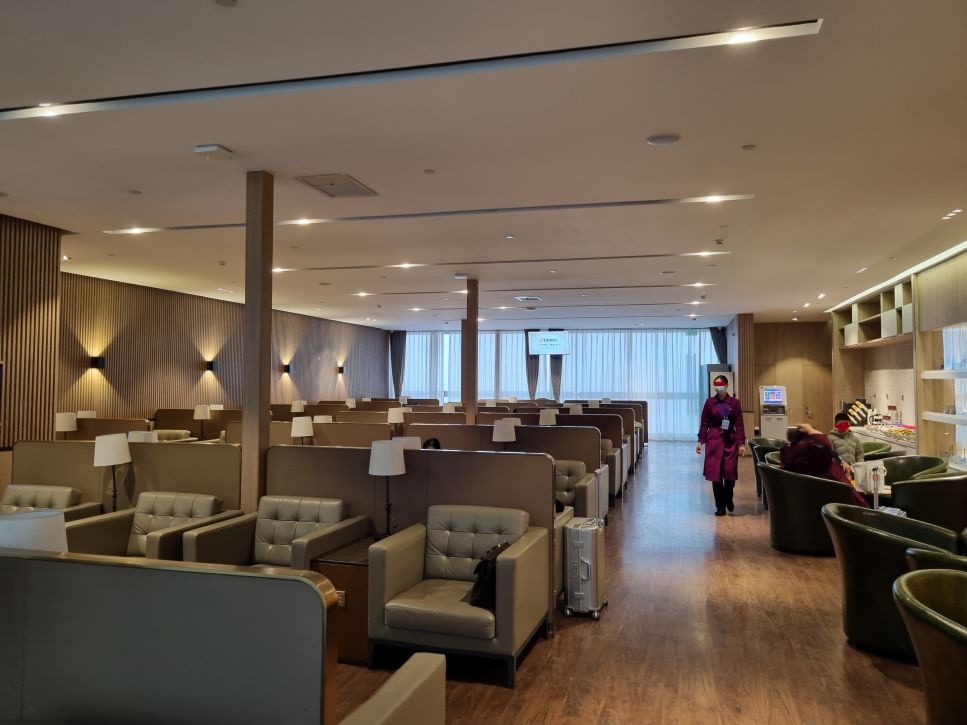
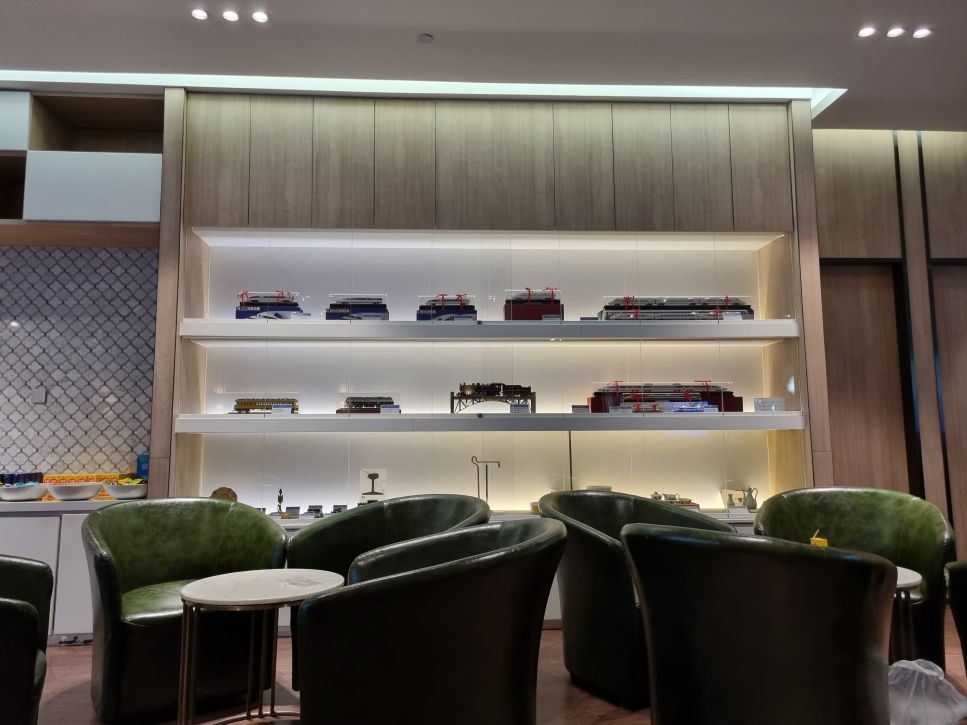
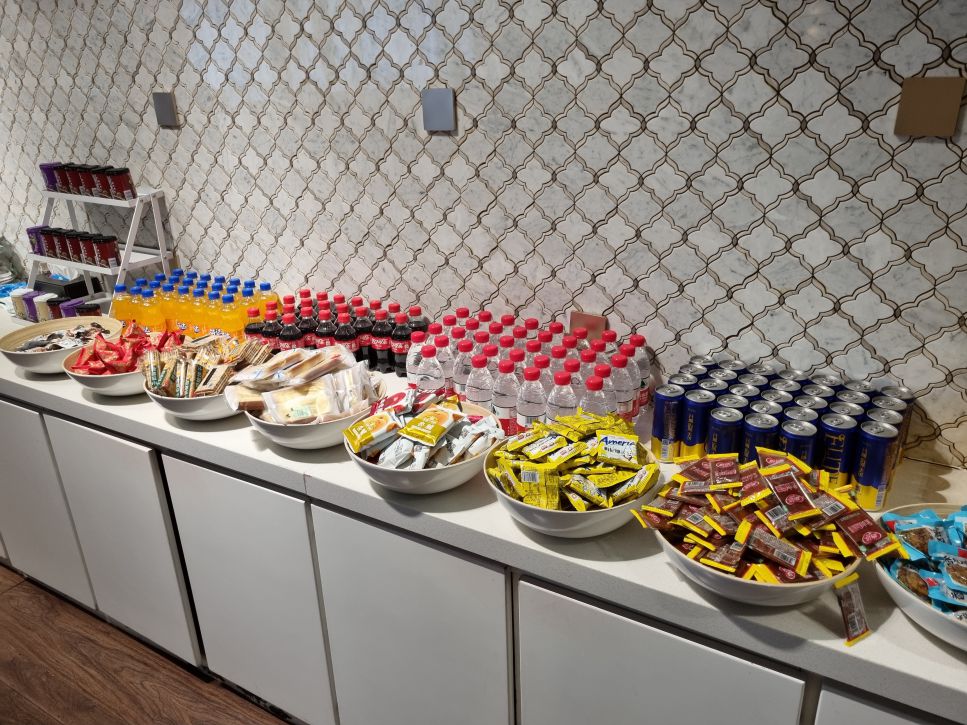
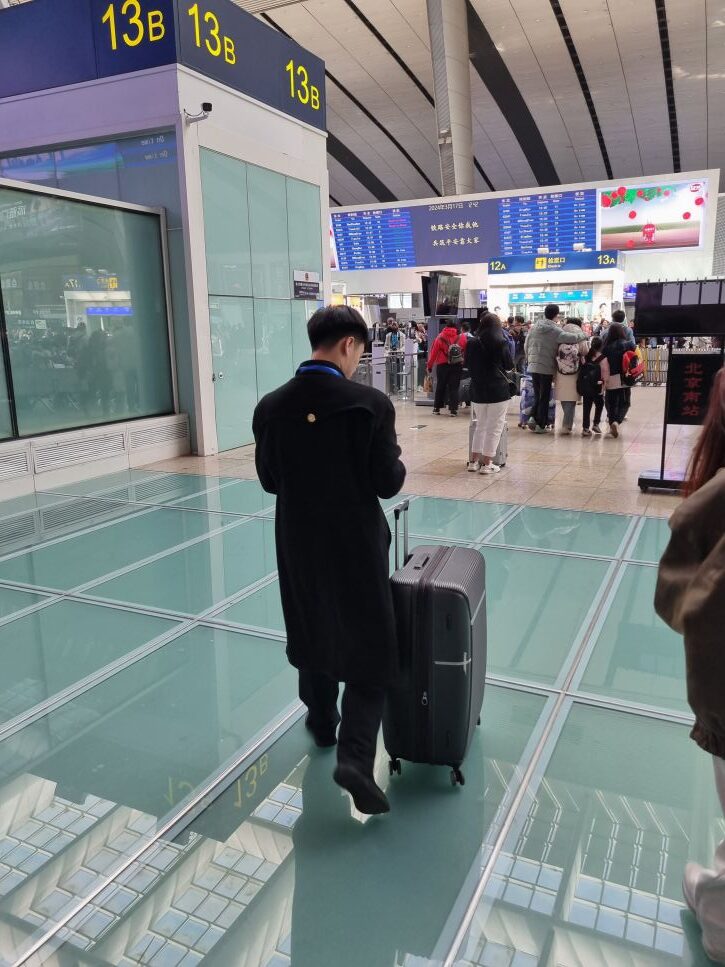
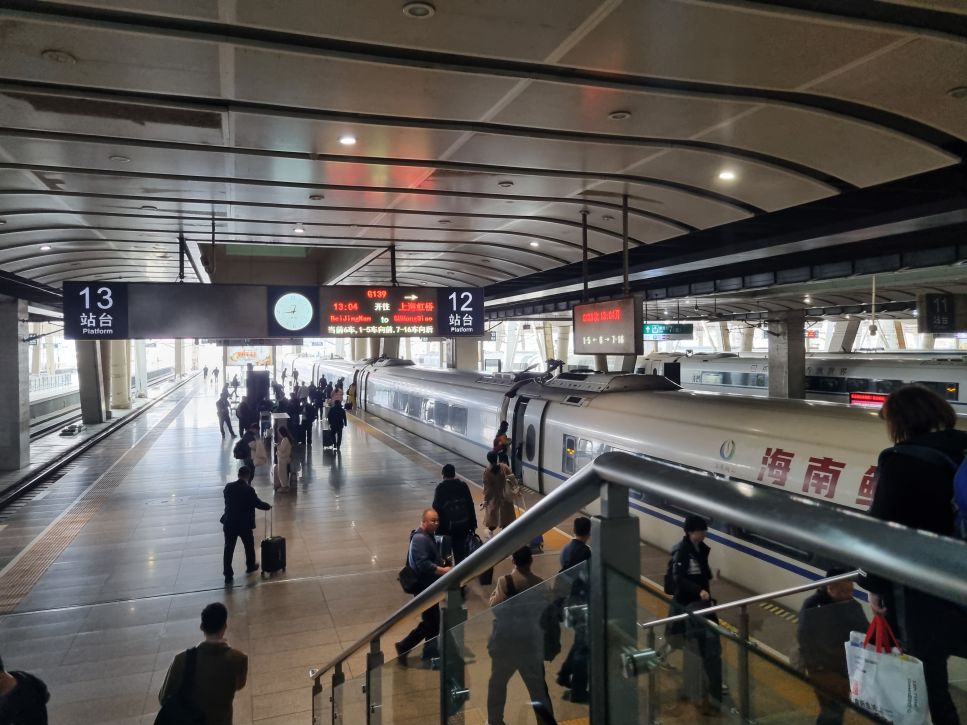
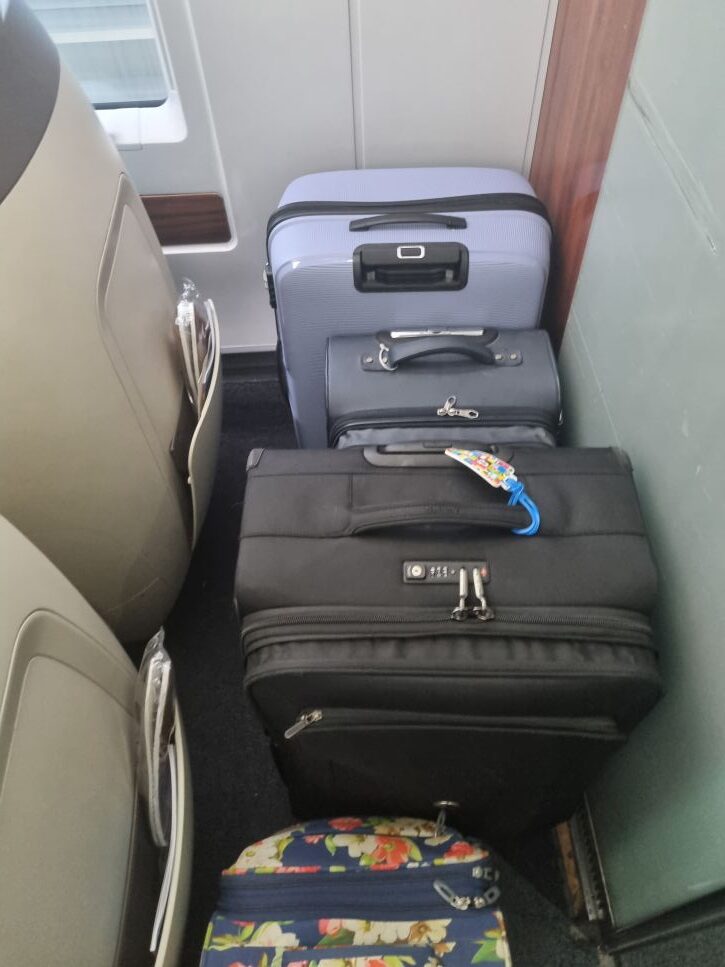
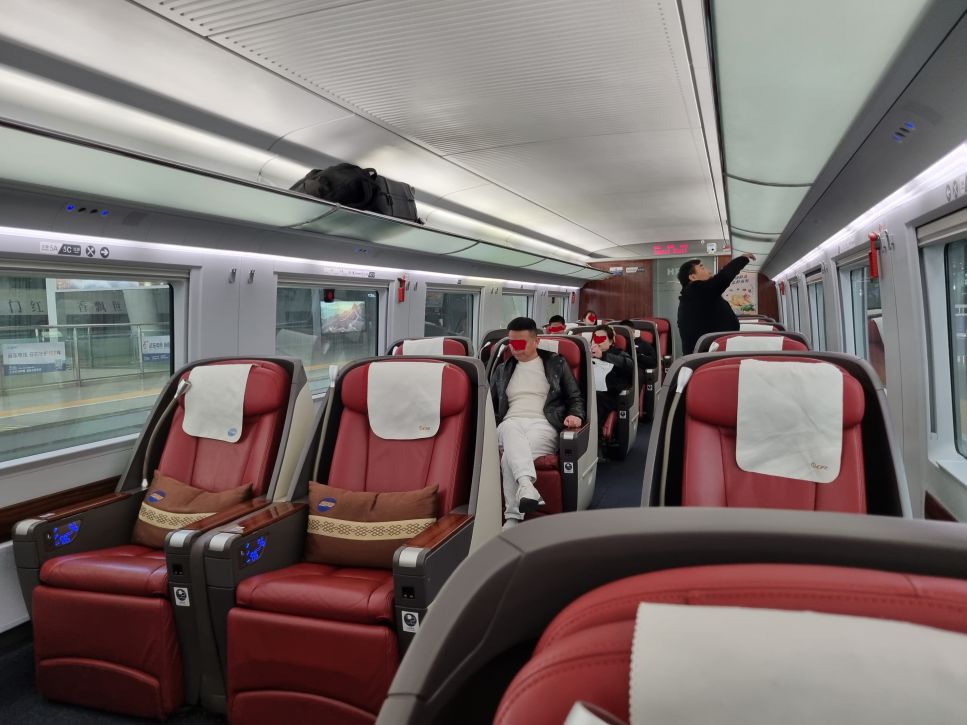
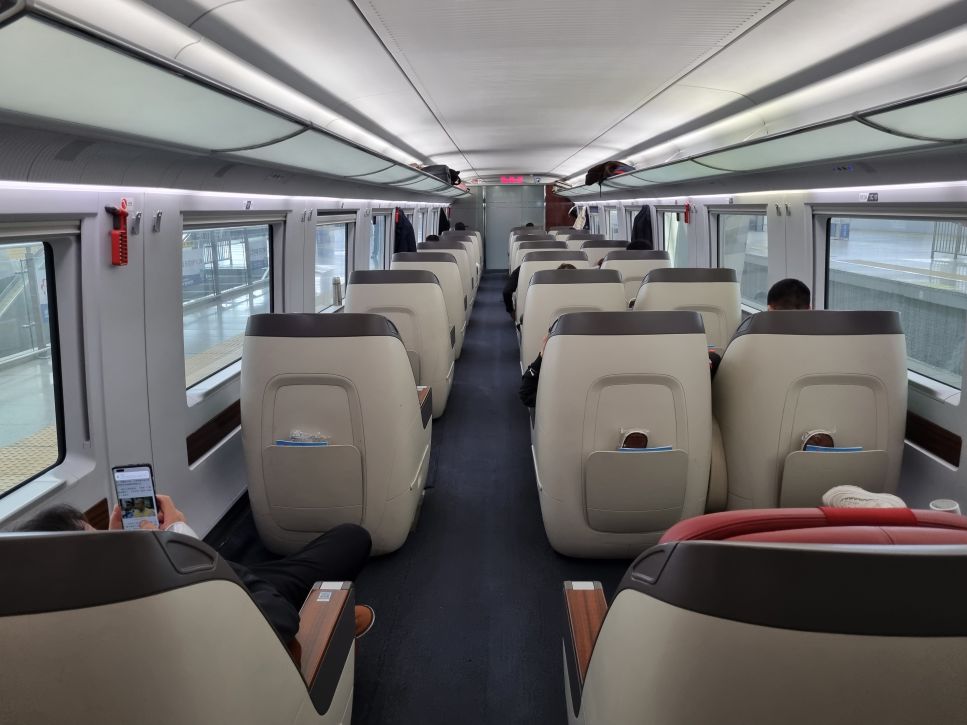
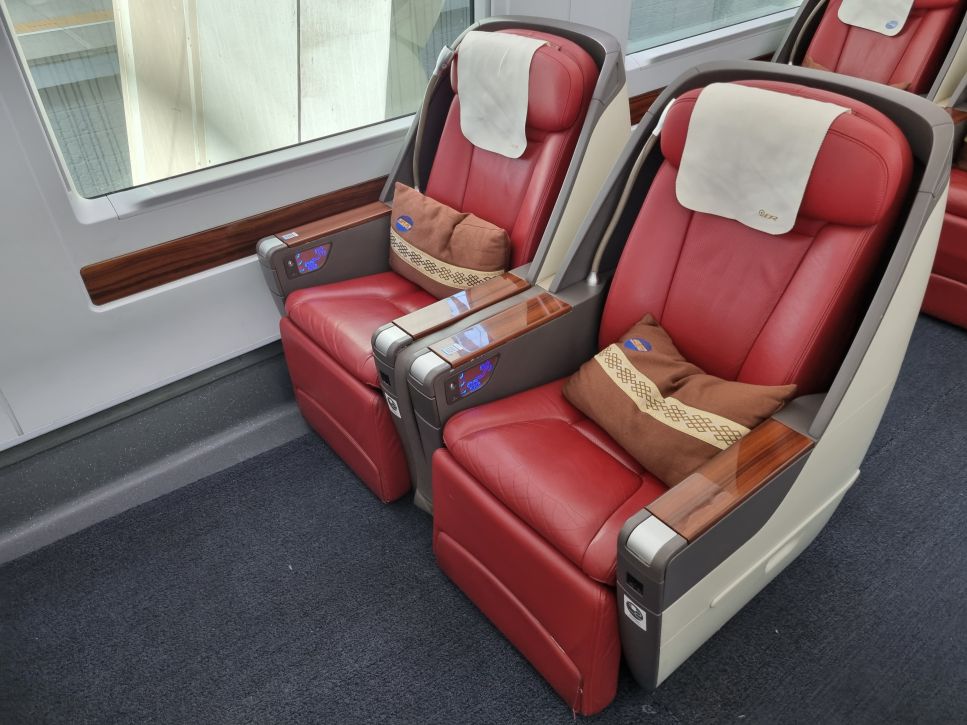
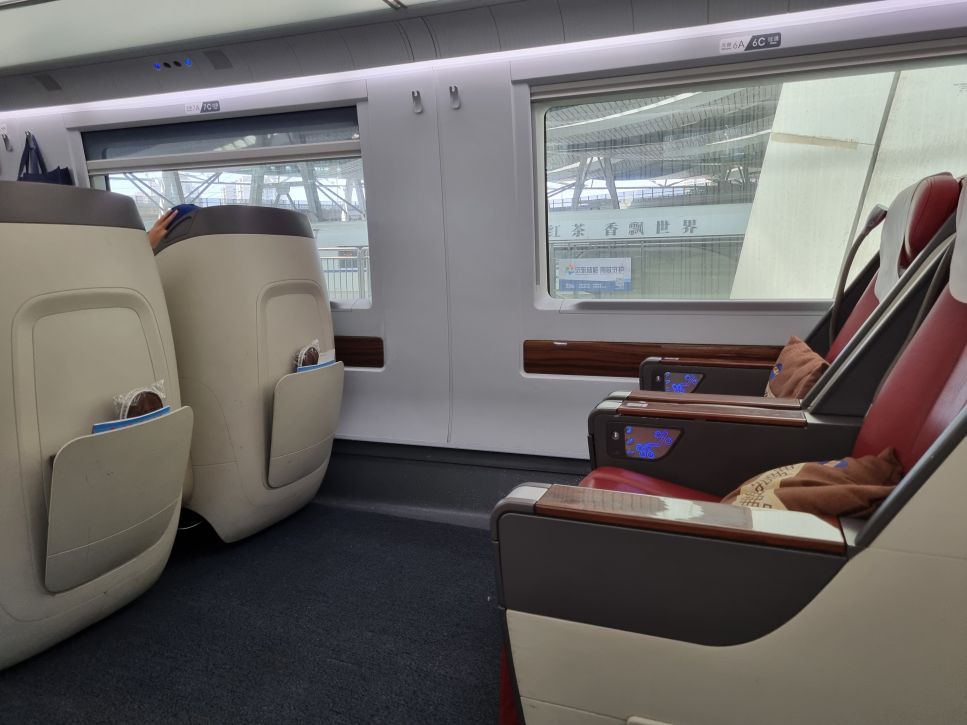
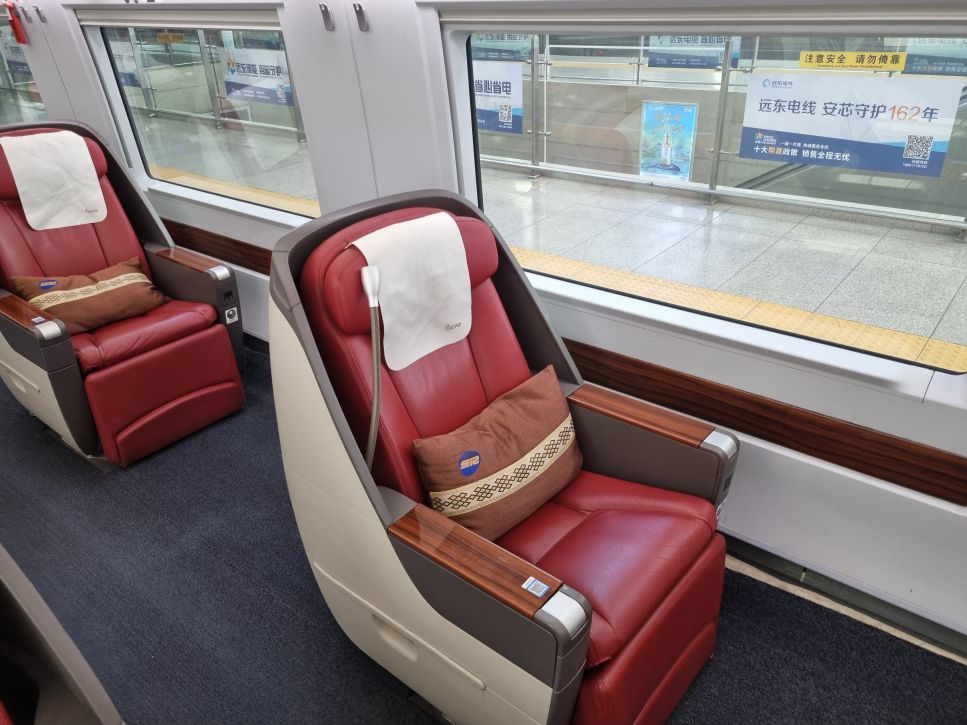
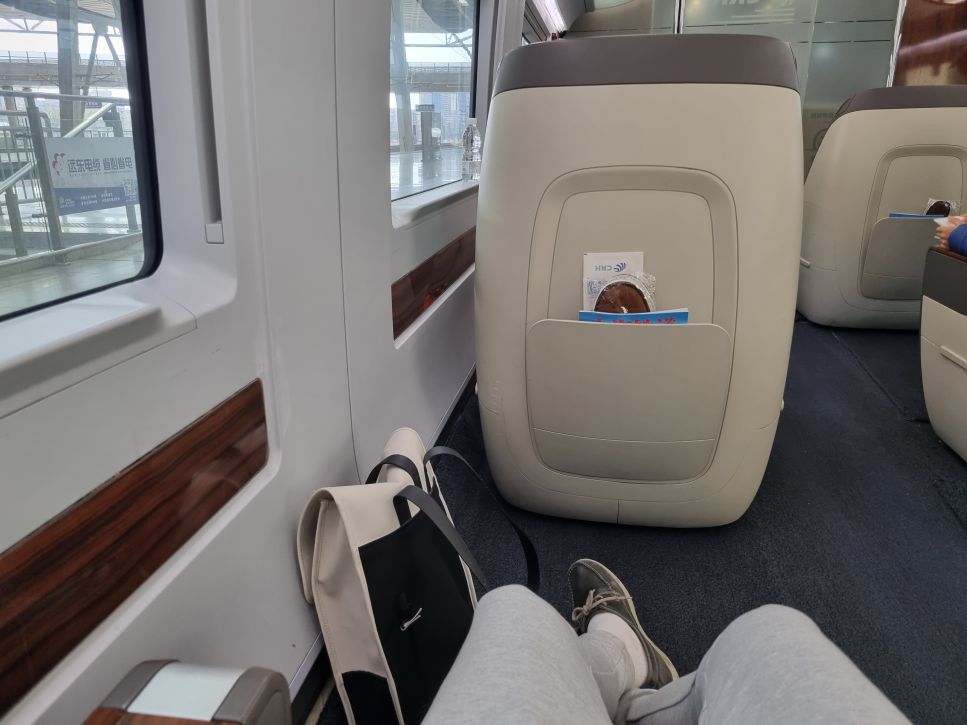
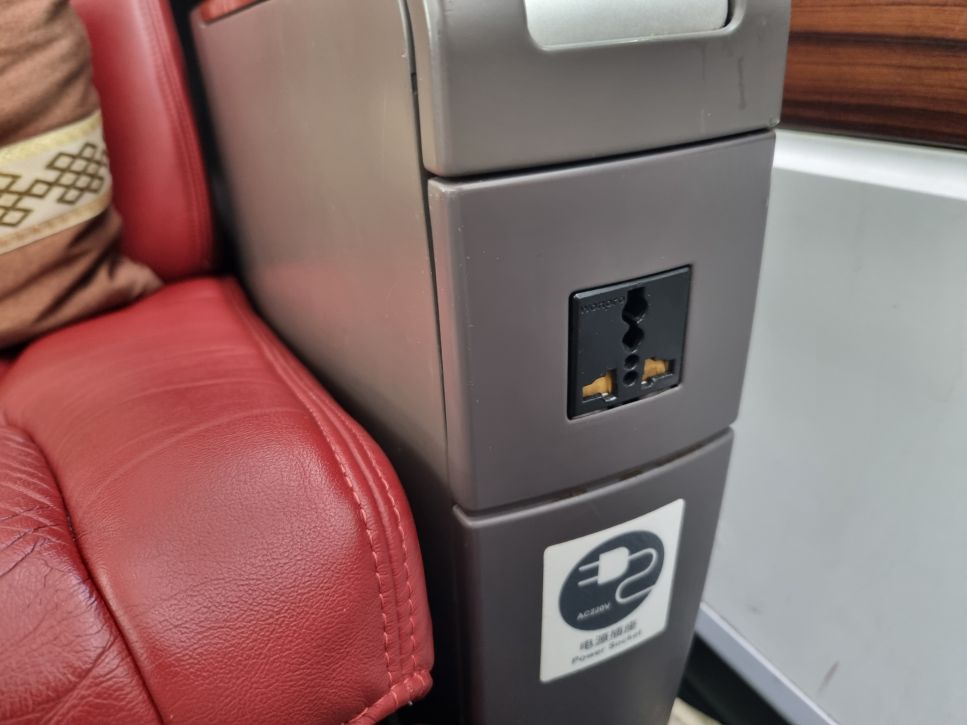
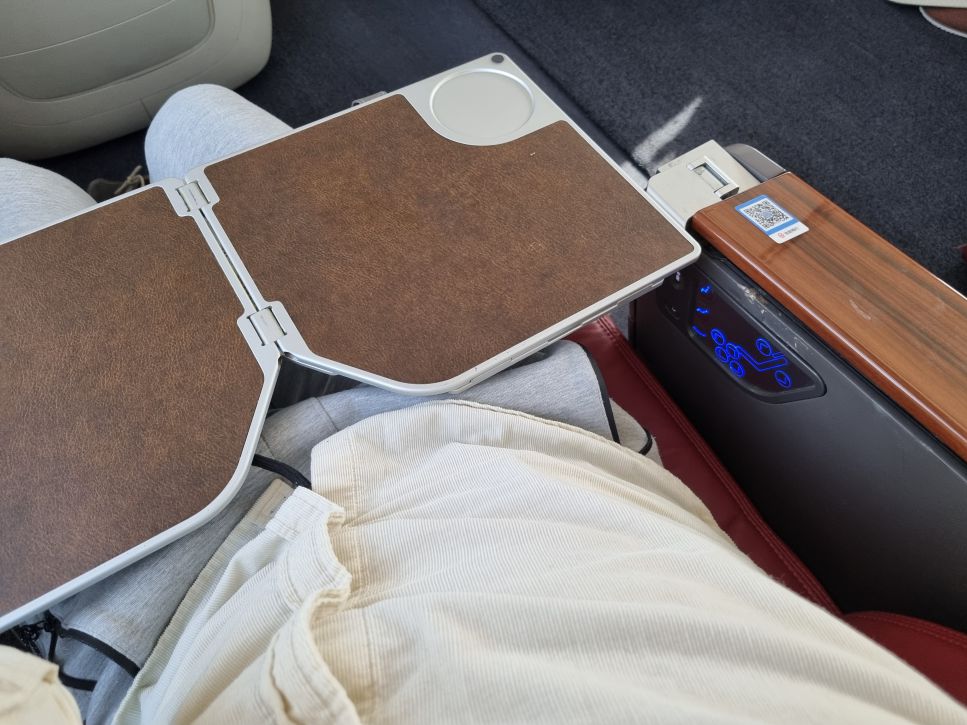
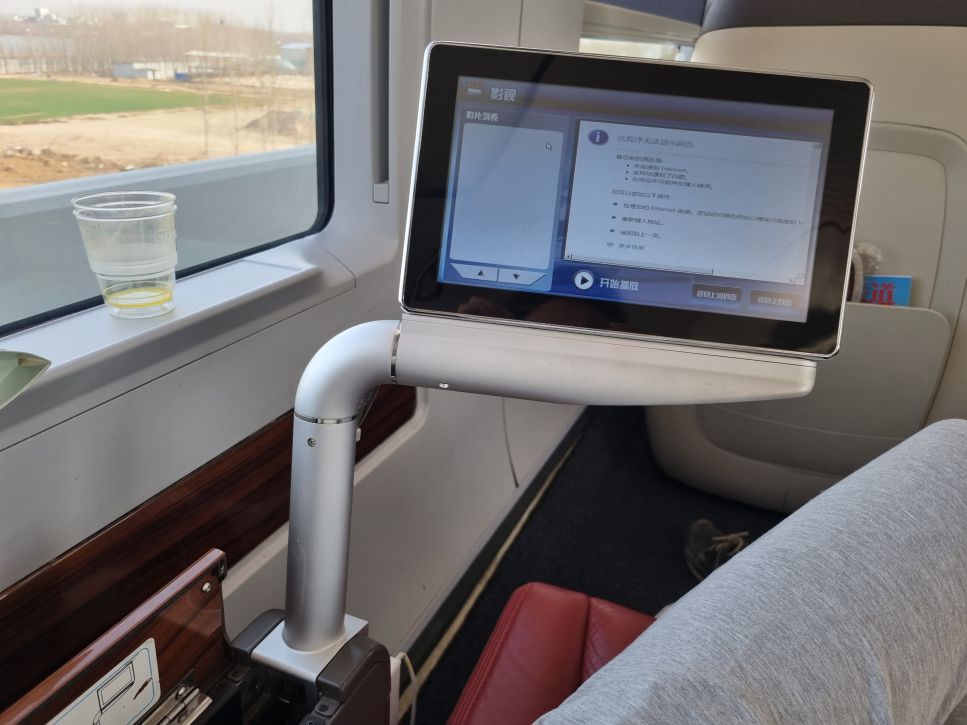
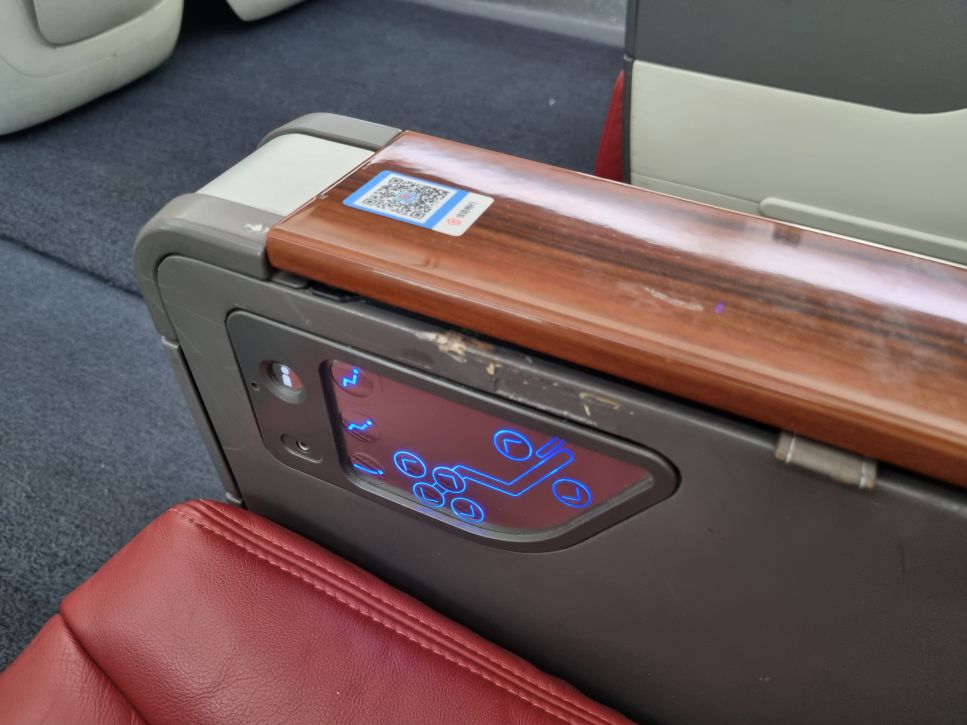
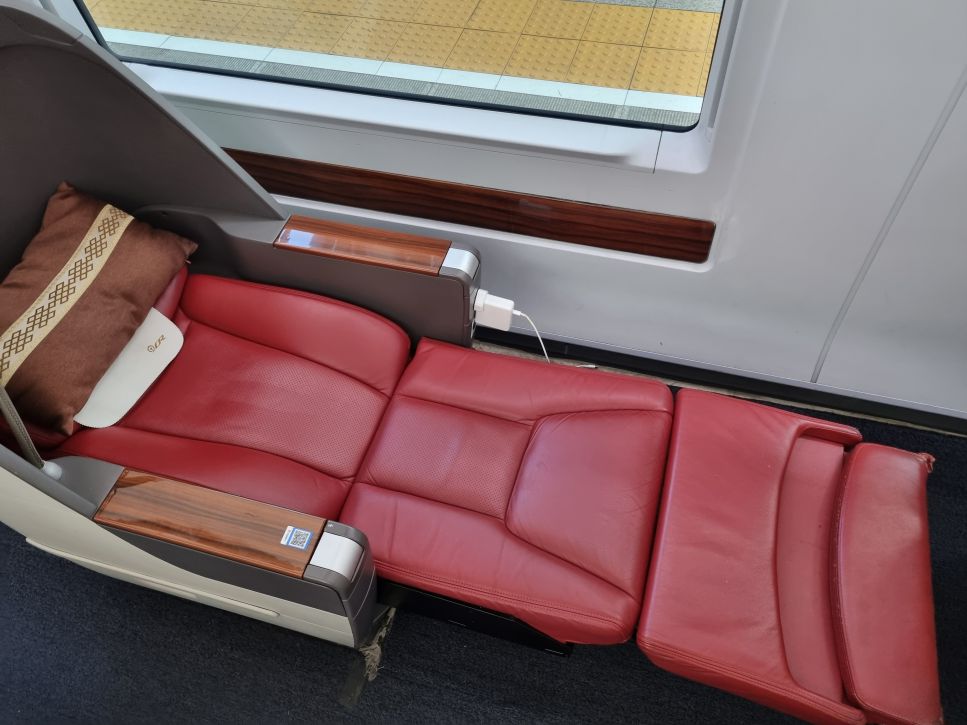
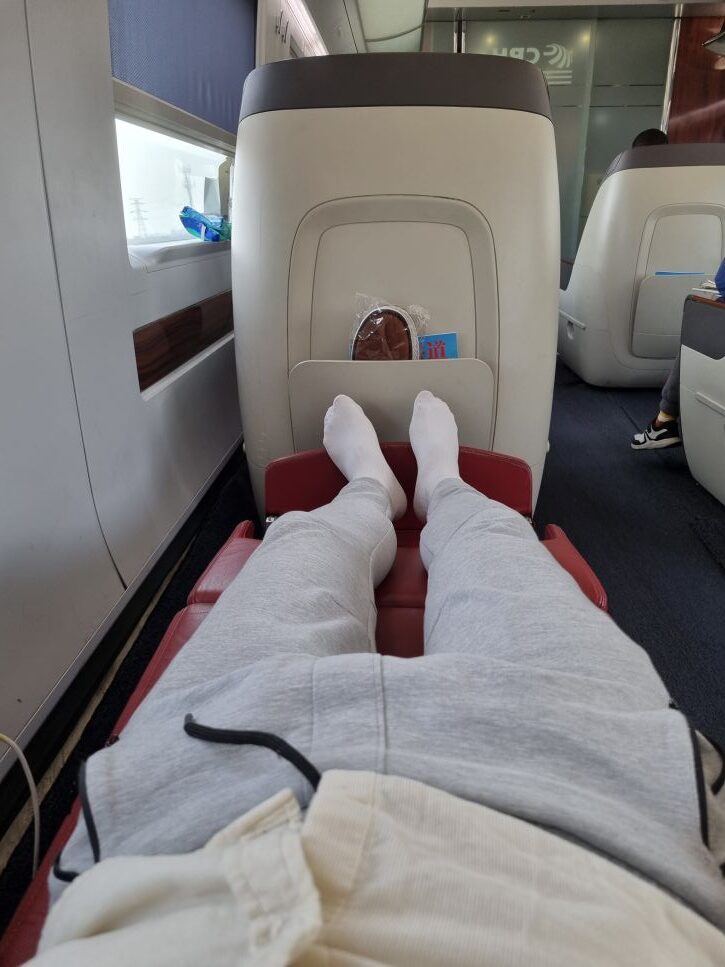
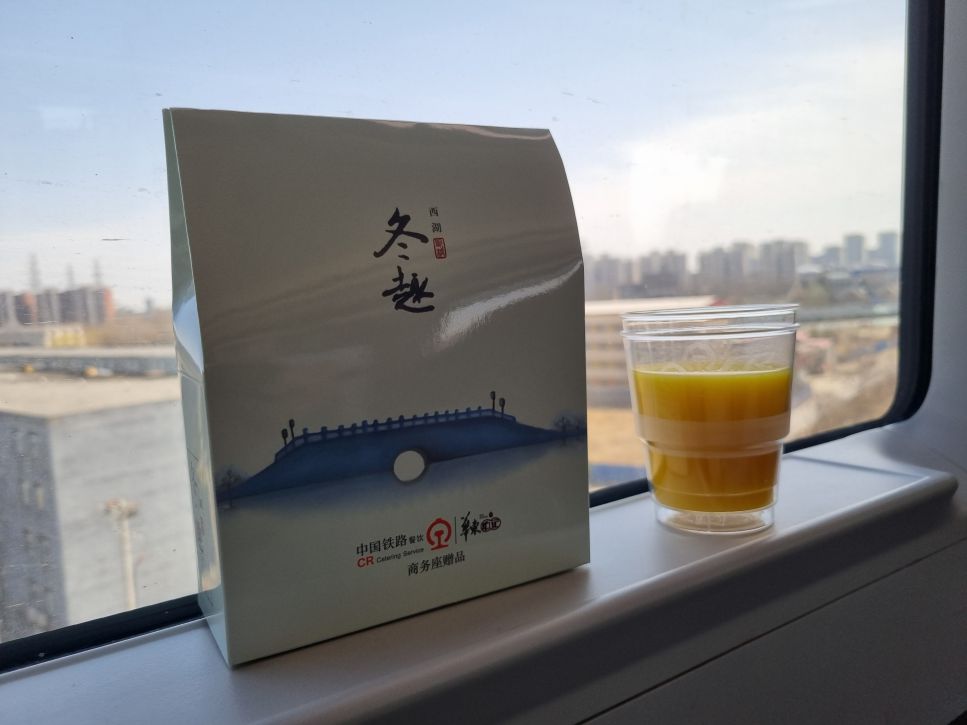
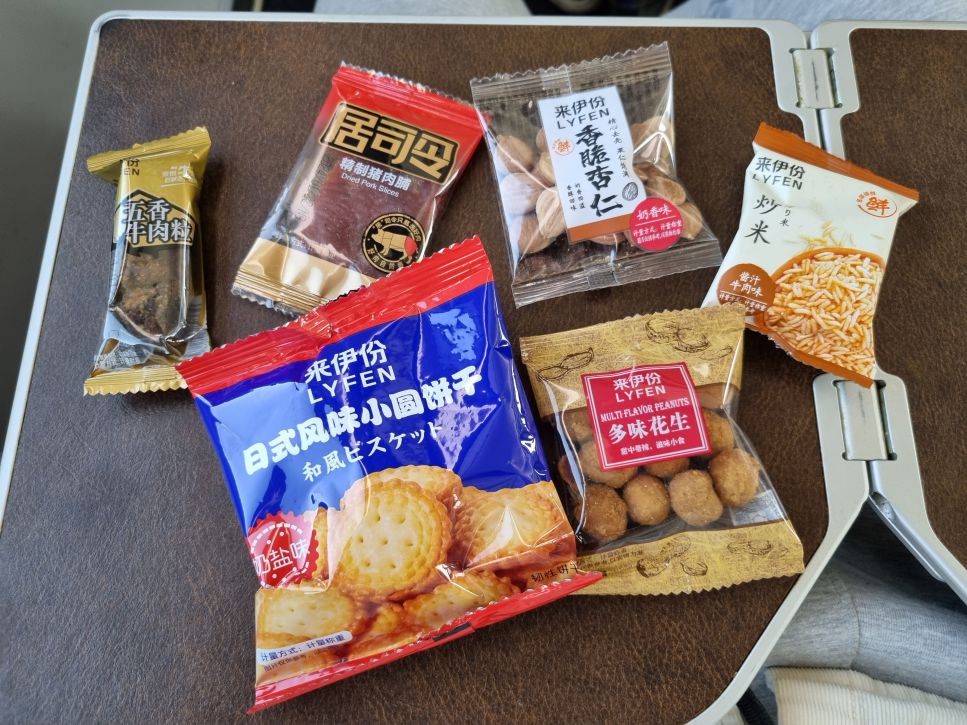
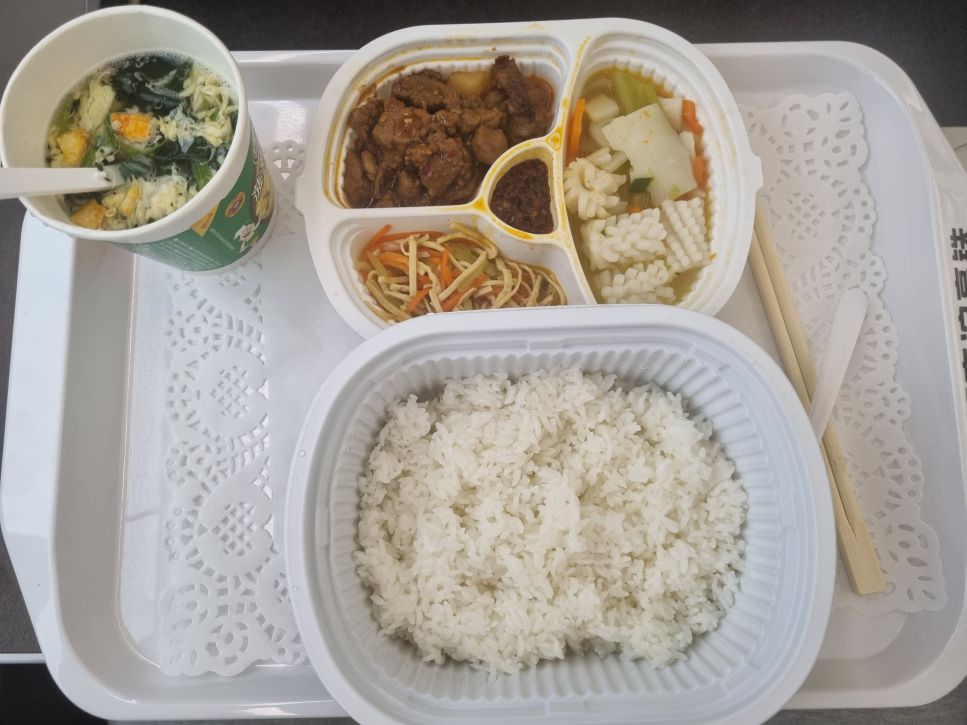
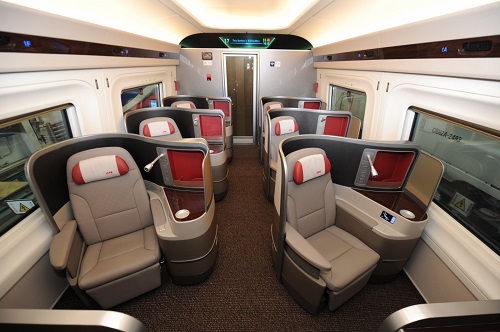
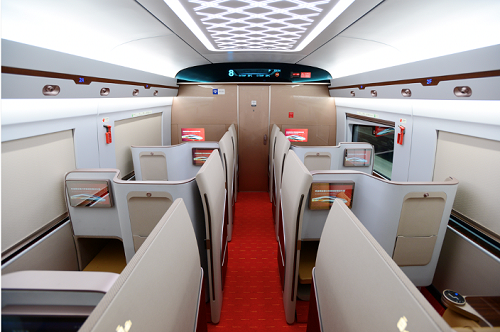




Recent Comments